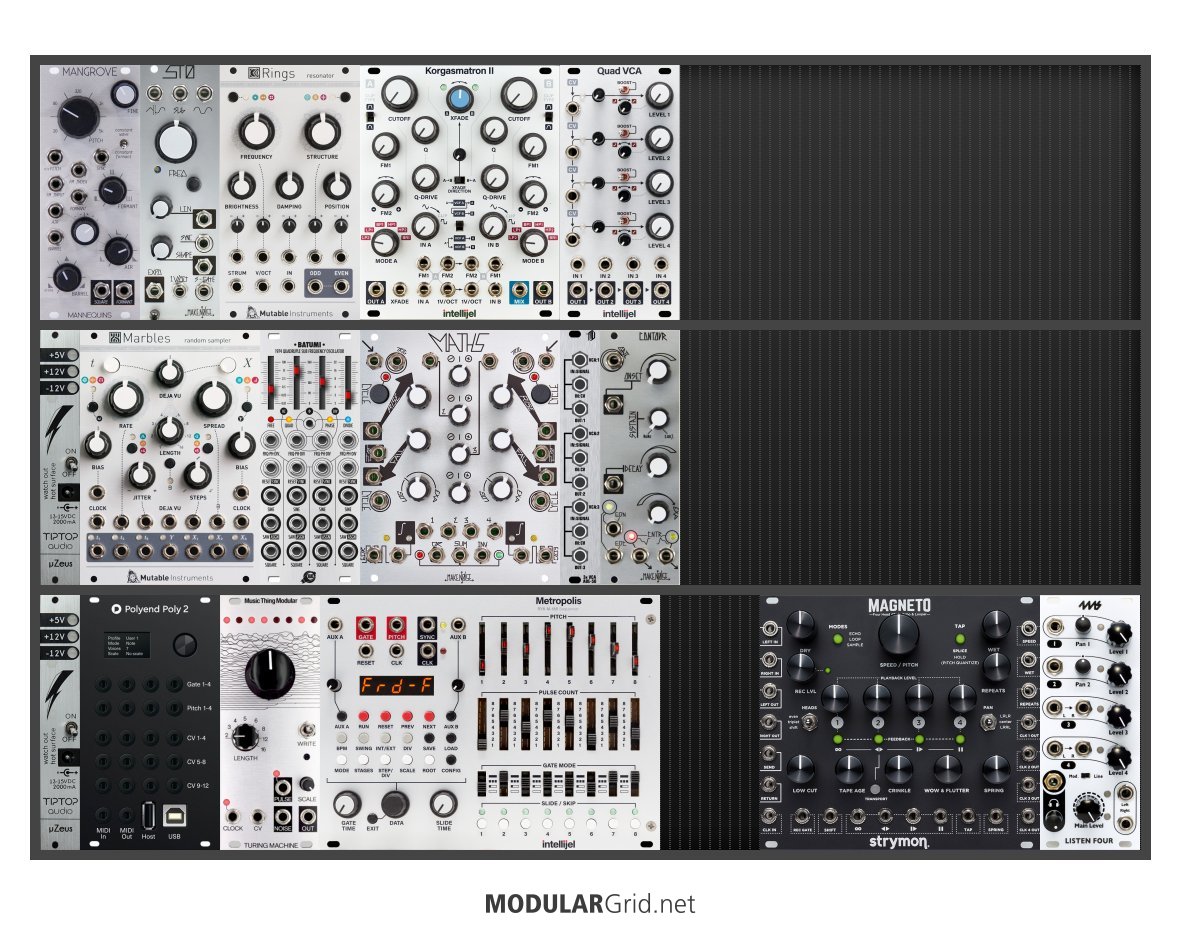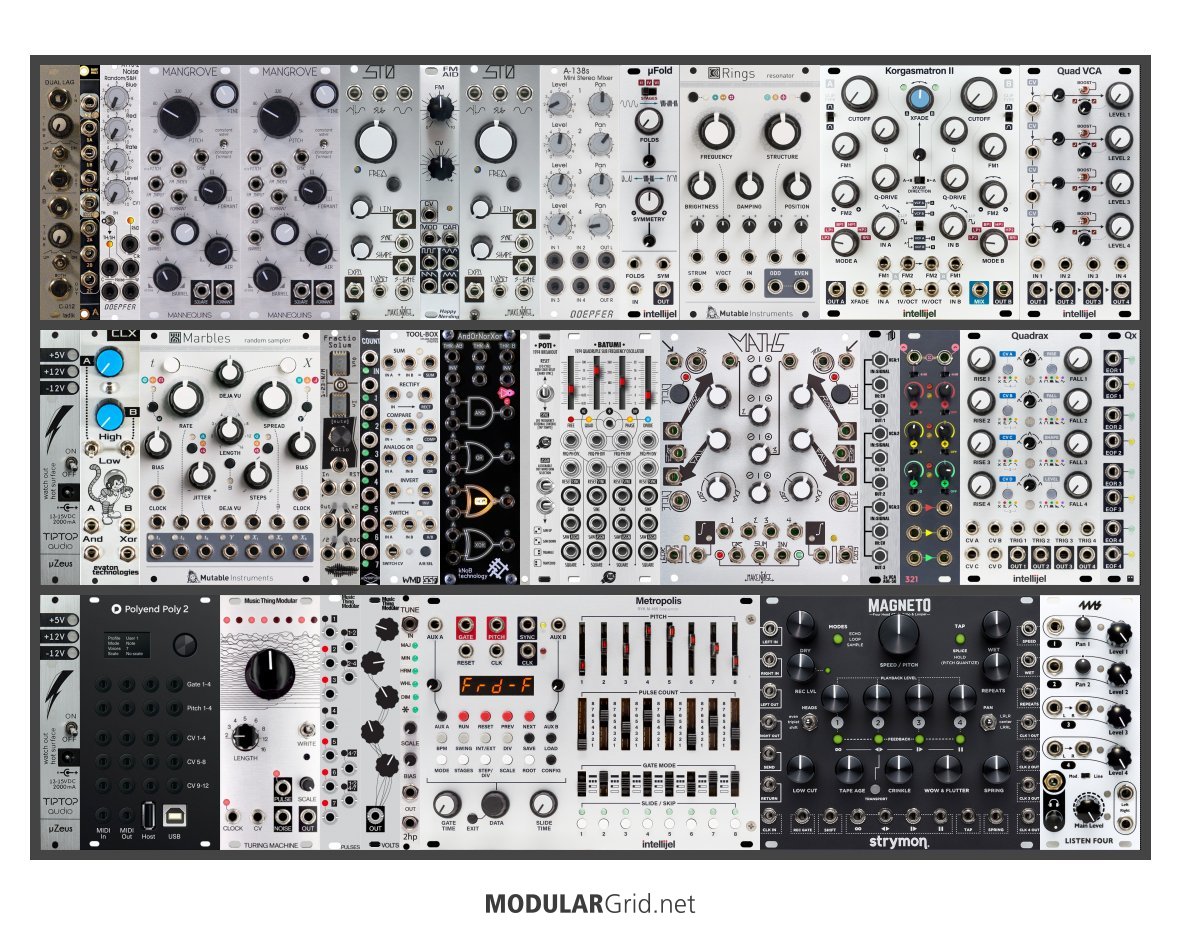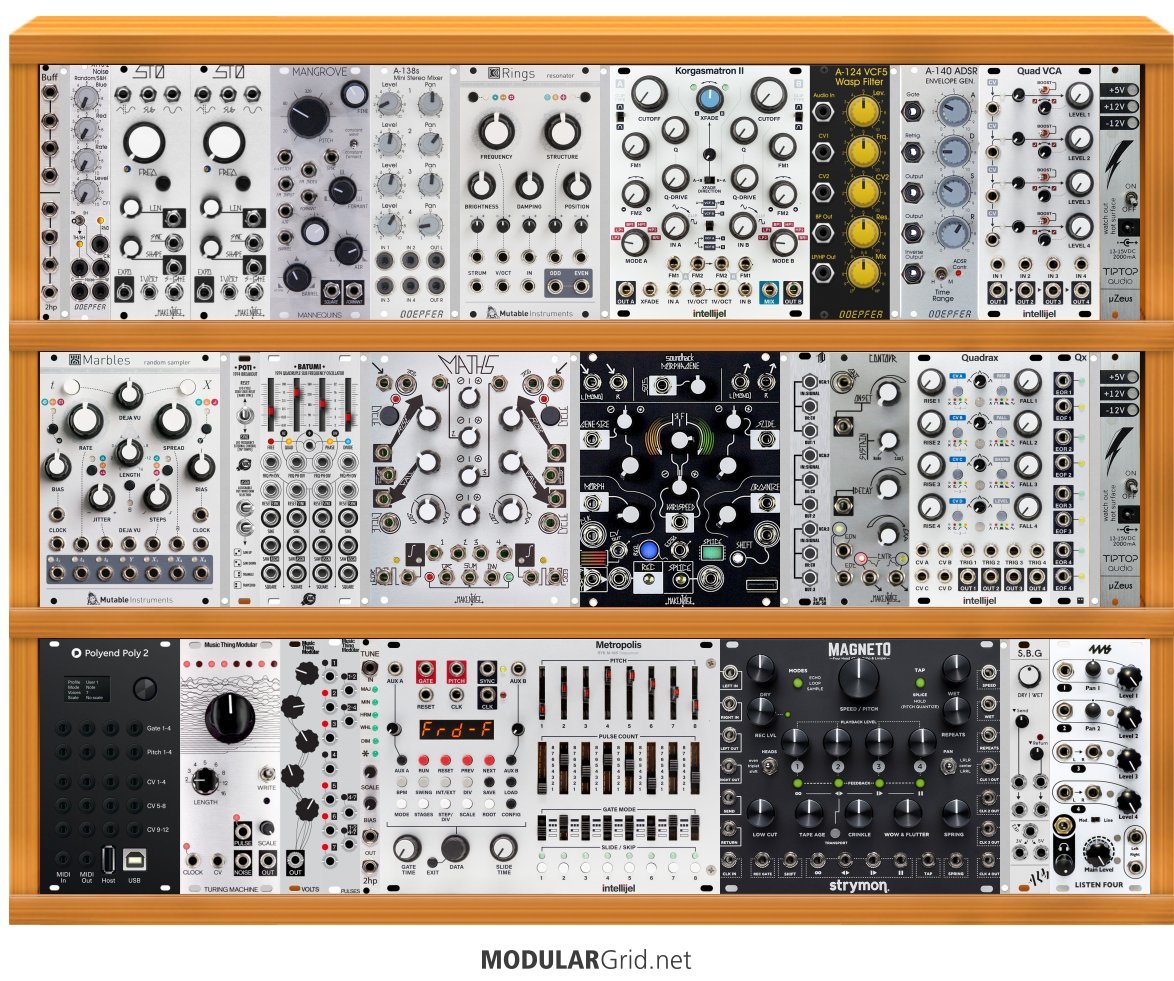OK...well, for starters, take the DFAM out. It's already got power and a housing, so it really doesn't belong in there unless there's some massive, glaring reason for having it there. The other problem is that this layout is pretty chaotic -- it doesn't have any clear signal paths, so what I did with what was there (after chucking the DFAM) was to try and illustrate what that would be like with what's there now:

Now, this makes more sense. The general "flow" now runs left to right, audio on the top row, modulation middle, sequencing and mixing on the bottom. However, there's still problems here, as reordering the rows now reveals some potential issues. For starters, there's no way to do any major manipulation of modulation signals. The audio row could be expanded and made easier with some additional modules. I also got the power supply modules away from the audio modules, as this can sometimes lead to noise problems.
I don't have a list of what you've got but which isn't in the build, but I went ahead and did an example based on how I would approach the build with the aim being to complete the build. This is what I got:

Top row: added a dual slew limiter for different portamento responses, then a buffered mult as there's several possible CV destinations. After that, a Doepfer module provides noise and basic sample-and-hold activity. The oscillators were doubled, plus the STO pair also has one of Happy Nerding's FM Aids for complex and/or thru-zero FM between these. The mini stereo mixer isn't for "stereo", but to give two different audio routings which can also be tandemmed. After it, I put in a wavefolder for more timbral complexity. Then, Rings, Morgasmatron and the Quad VCA.
Middle row: The clocking and randomness takes up the left end of this, with one of the uZeuses, then an Evaton CLX, which provides two clocks with some integrated logic for manipulating the output. Marbles is next for more complex random behavior, then a Noise Engineering Fractio Solum gives you CVable clock division or multiplication. The COUNT then ticks off each clock pulse from 1-8 to split out various points in time from the overall clock. The Tool Box offers a load of utilities related to timing, logic, as well as a comparator for picking gates off from modulation sources. Last in the series there is a set of Boolean logic gates, which can take several different gates and output new/different ones based on the logic operation as well as what incoming gates are present. The other end of the row is modulation: Batumi (added the Poti expander), Maths, the triple linear VCA, then a Frap 321 for combining, inverting, altering modulation signals. Then for envelopes, you've got a Quadrax with the Qx expander, and this lets it also be used as a very complex cascading modulation source.
Bottom row: I set this up primarily as "control". The MIDI interface is there, then the Turing Machine to which I added its CV and gate expanders. Along with that, there's a 2hp TUNE for quantizing the CV expander. After this, the Metropolis, then the Magneto, and finally the 4ms mixer.
This should give you some ideas as to what additional modules will really open this build up, as well as how a cohesive layout that takes signal flow into account. Notice that the middle row's implementation is easily directed up toward the audio row or down to the control row, depending on what's needed at the time. This is how you keep the patching under control, as it helps avoid the "patchcord snarl" that you tend to get when the various modules are scattered all over the rack. It's not a "final result", though...there's still quite a bit that could be done. For example, my instinct would be to go with a much smaller delay line module so that a proper performance mixer could be implemented here, with this then offering CV over levels, panning, and AUX sends depending on which mixer seems right and which fits. However, I stuck with the existing modules with the exception of the Contour, which became superfluous after I put the Quadrax/Qx in.




